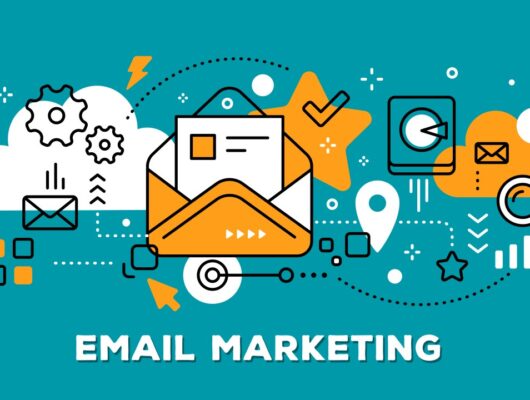Search Engine Optimization (SEO) is crucial for any online store that wants to increase its visibility, attract more customers, and drive sales.
With millions of e-commerce sites competing for attention, having a solid SEO strategy can make all the difference.
In this article, we’ll explore the best e-commerce SEO strategies to improve your search rankings and bring more organic traffic to your online store.
1. Conduct Thorough Keyword Research
Keyword research is the foundation of any SEO strategy. By identifying the right keywords, you can create content that targets what your potential customers are searching for.
- Use long-tail keywords: Long-tail keywords (e.g., “best running shoes for flat feet”) are more specific and often have less competition than generic terms. They also tend to convert better because they target users with a clear intent to purchase.
- Focus on product and category keywords: Optimize for terms that directly relate to your products or categories. Think about how people search for products and use those insights to shape your content.
- Leverage tools: Use tools like Google Keyword Planner, Ahrefs, and SEMrush to find the best keywords for your product offerings.
2. Optimize Product Pages for SEO
Product pages are where the majority of your conversions will happen, so optimizing them for SEO is essential. Ensure that each product page is fully optimized to improve visibility in search engine results.
- Optimize titles and descriptions: Include your primary keywords in the title tag and meta description. Write compelling, keyword-rich descriptions that highlight the product’s features and benefits.
- Use high-quality images: Ensure that images are optimized for fast loading and include alt text that describes the image using relevant keywords. This helps improve visibility in image search results and boosts overall page SEO.
- Add customer reviews: Search engines value user-generated content, so encourage customers to leave reviews. Positive reviews not only build trust but also help with SEO.
- Schema markup: Implement product schema markup to help search engines understand your product details (such as price, availability, and ratings). This can lead to rich snippets in search results, increasing visibility.
3. Improve Website Speed and Mobile Usability
Page speed and mobile optimization are critical for both SEO and user experience. Google uses page speed as a ranking factor, and with an increasing number of users shopping via mobile devices, mobile optimization is crucial.
- Optimize images: Compress images without sacrificing quality to reduce page load times. Use modern formats like WebP for faster image loading.
- Enable caching and compression: Use caching to reduce load times for returning visitors and enable GZIP compression to minimize file sizes.
- Mobile responsiveness: Ensure that your e-commerce site is fully responsive and provides a seamless shopping experience on mobile devices. Google prioritizes mobile-friendly websites in its rankings.
- Reduce unnecessary scripts: Minimize the use of unnecessary JavaScript or CSS that can slow down the page. This ensures a faster, smoother browsing experience.
4. Create High-Quality, SEO-Friendly Content
Content marketing is an effective way to boost your e-commerce store’s SEO. By creating high-quality, engaging content, you can drive organic traffic and increase your chances of ranking higher on search engines.
- Write product-focused blog posts: Create blog content that answers common questions, offers product comparisons, or provides guides related to your products. This can capture users in the research phase and drive traffic to your product pages.
- Use educational content: For example, if you sell electronics, create guides on how to choose the right device or troubleshooting tips. This content not only improves SEO but also builds trust with potential customers.
- Incorporate keywords naturally: Include your target keywords in blog posts, category pages, and product descriptions. But avoid keyword stuffing—make sure the content reads naturally and adds value to your audience.
- Create how-to videos: Videos are highly engaging and have the potential to rank in Google’s search results. Consider making product demos, unboxing videos, or tutorials related to your products.
5. Optimize for Local SEO
Local SEO is essential if you have a physical store or offer services in specific regions. Optimizing your site for local searches can help drive traffic from nearby customers who are more likely to convert.
- Claim and optimize your Google My Business listing: Ensure that your Google My Business profile is fully optimized with accurate contact information, business hours, photos, and customer reviews.
- Add location-based keywords: Include location-based keywords in your title tags, meta descriptions, and content to rank for local searches. For example, “buy handmade jewelry in Los Angeles.”
- Create local content: Publish blog posts or landing pages that target local events, partnerships, or customer stories to build local relevance and authority.
- Encourage reviews: Ask satisfied local customers to leave reviews on Google and other local review sites. Positive reviews boost your credibility and improve local rankings.
6. Build High-Quality Backlinks
Backlinks are an important ranking factor for SEO. The more high-quality, relevant websites that link to your e-commerce store, the more authority your site will gain in the eyes of search engines.
- Guest posting: Write guest posts for other blogs in your industry. Include a link back to your store or relevant product pages to boost traffic and domain authority.
- Influencer collaborations: Partner with influencers who can share links to your products on their websites or blogs. This not only increases your reach but also earns you valuable backlinks.
- Create link-worthy content: Develop content like in-depth guides, infographics, or original research that other websites would find useful and want to link to.
- Build relationships with relevant sites: Network with bloggers, journalists, and businesses in your niche to create opportunities for backlinking.
7. Optimize Site Architecture and Navigation
A well-structured website is essential for both SEO and user experience. Search engines should be able to crawl and index your pages easily, and customers should be able to find products effortlessly.
- Create clear categories: Organize your products into well-defined categories and subcategories. This makes it easier for search engines to index your content and for customers to navigate your site.
- Use breadcrumb navigation: Breadcrumbs improve the user experience by showing visitors where they are on your site and helping them navigate back to previous pages.
- Optimize URL structure: Keep your URLs short, descriptive, and keyword-rich. For example, use “/mens-running-shoes” instead of “/product/12345.”
- Internal linking: Use internal links to connect related products and blog posts. This helps search engines understand the relationship between different pages and boosts SEO.
8. Implement a Secure and Accessible Website
Google prioritizes websites that are secure and accessible to users with disabilities. A secure website protects customer data and boosts trust, while an accessible site ensures that all customers can interact with your content.
- Use HTTPS: Ensure your website is secured with an SSL certificate. This not only protects customer data but also improves SEO, as Google prefers secure websites.
- Accessibility features: Implement accessibility features such as alt text for images, transcripted videos, and a clear layout that’s easy for all users to navigate.
9. Leverage Social Proof and User-Generated Content
Social proof, such as customer reviews, ratings, and testimonials, plays an important role in SEO. It not only builds trust with potential customers but also provides additional content that search engines can index.
- Encourage reviews: Ask your customers to leave reviews and ratings for products they’ve purchased. Display these reviews prominently on product pages.
- Social media sharing: Encourage users to share their experiences with your products on social media. This can lead to more backlinks and social signals, which can positively impact your SEO.
Conclusion
E-commerce SEO is essential for driving organic traffic to your online store and increasing sales.
By implementing these strategies—focusing on keyword research, product page optimization, mobile-friendliness, quality content, and backlink building—you can boost your rankings, attract more customers, and improve your bottom line.
SEO is an ongoing process, so continuously monitor your performance, adapt to algorithm changes, and keep refining your strategy to stay ahead of the competition.







